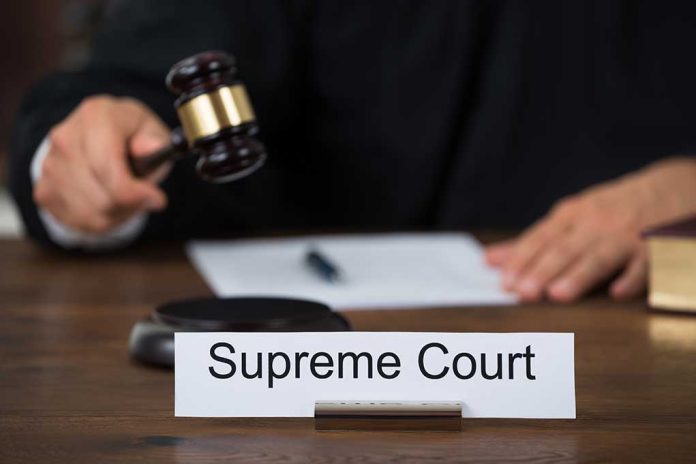
Judge Charles Simms III has banned all cameras and electronic devices from the high-profile Crystal Rogers murder trial to prevent what he feared would become a “circuslike atmosphere” in the Kentucky courtroom.
Key Takeaways
- Judge Charles Simms III has imposed strict media restrictions for the trial related to Crystal Rogers’ 2015 disappearance and presumed murder, banning all cameras and electronic devices from the courtroom.
- Steve Lawson’s trial begins May 27, followed by Joseph Lawson and Brooks Houck (Rogers’ boyfriend), all charged in connection with the Kentucky mother’s disappearance.
- The trials have been relocated to Bowling Green due to extensive publicity, with observers prohibited from sharing trial information during proceedings.
- Despite the restrictions, court recordings will be made available and a dedicated media room will be established for reporters.
A Mother’s Disappearance and the Pursuit of Justice
The disappearance of Crystal Rogers in 2015 has haunted Kentucky for nearly a decade. Rogers vanished after last being seen with her boyfriend, Brooks Houck, and his family. Her car was later discovered abandoned on the Bluegrass Parkway with the engine running and her purse still inside, but her body has never been found. This mysterious case has finally progressed to trial, but not without significant concerns about media influence on the judicial process. The judge’s decision to restrict media access reflects growing frustration with how high-profile cases can quickly transform into media spectacles rather than sober legal proceedings.
Strict Media Protocols Established
Judge Charles Simms III has taken unprecedented steps to maintain the integrity of the upcoming trials. The judge’s order specifically prohibits cameras and electronic devices in the courtroom, a decision aimed at preventing disruptions and maintaining decorum during what promises to be an emotionally charged proceeding. Additionally, those allowed in the courtroom cannot disseminate information about the trial while court is in session, further tightening control over how information flows from the proceedings. These restrictions represent a conservative approach to justice that prioritizes due process over public spectacle.
NEW: Nelson County judge puts strict limits on media coverage of Crystal Rogers' murder trial.
"Unfortunately, this case has generated tremendous interest among the news media and the general public which has resulted in a 'circuslike atmosphere.'"https://t.co/4wptthyXXt— Jason Riley (@JasonRileyWDRB) May 13, 2025
Three Defendants Face Serious Charges
Steve Lawson’s trial, scheduled to begin May 27, will be the first of three related proceedings. Lawson faces charges of conspiracy to commit murder and tampering with physical evidence. His case will be followed by the trial of Joseph Lawson in June, who faces similar charges. The most high-profile defendant, Brooks Houck – Rogers’ boyfriend at the time of her disappearance – will face his own trial later, charged directly with murder and evidence tampering. Houck remains in custody with bail set at an extraordinary $10 million, reflecting the gravity of the accusations against him.
Change of Venue Highlights Case Notoriety
The decision to relocate all three trials to Bowling Green, Kentucky, underscores the impossible task of finding impartial jurors in Nelson County, where Rogers disappeared. The case has generated intense local and national interest, with multiple searches, investigations, and even television documentaries examining the circumstances of Rogers’ disappearance. While justice demands transparent proceedings, the court clearly recognizes that excessive media coverage can taint jury pools and compromise defendants’ constitutional rights to fair trials – a balance that conservative judicial philosophy has long emphasized.
Accommodations Despite Restrictions
Despite the strict limitations, Judge Simms has not completely shut out media coverage. The court will make recordings of the trial available, and a dedicated media room will be established for reporters covering the proceedings. These accommodations reflect an understanding of the public’s legitimate interest in this case while maintaining necessary safeguards. The approach represents a measured response to modern media dynamics that often prioritize sensationalism over substance, particularly in cases involving attractive victims, mysterious circumstances, and years of unanswered questions.









